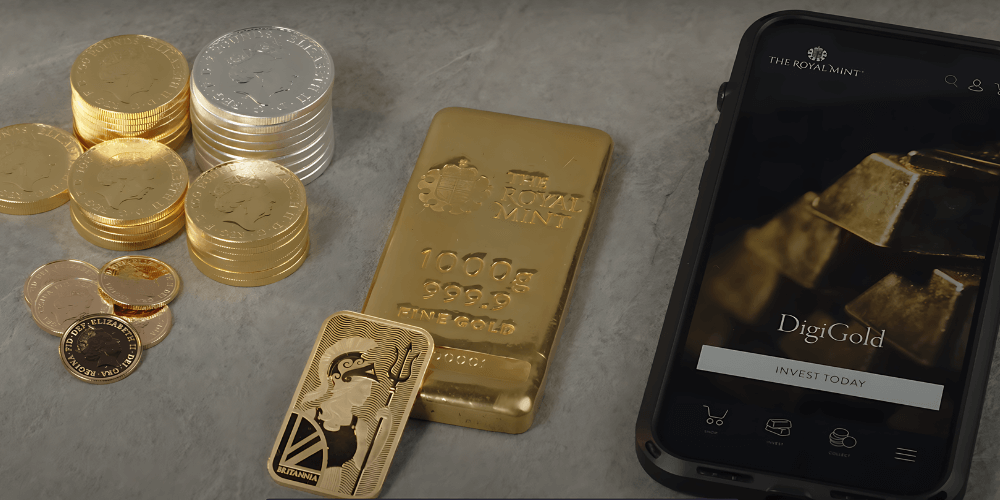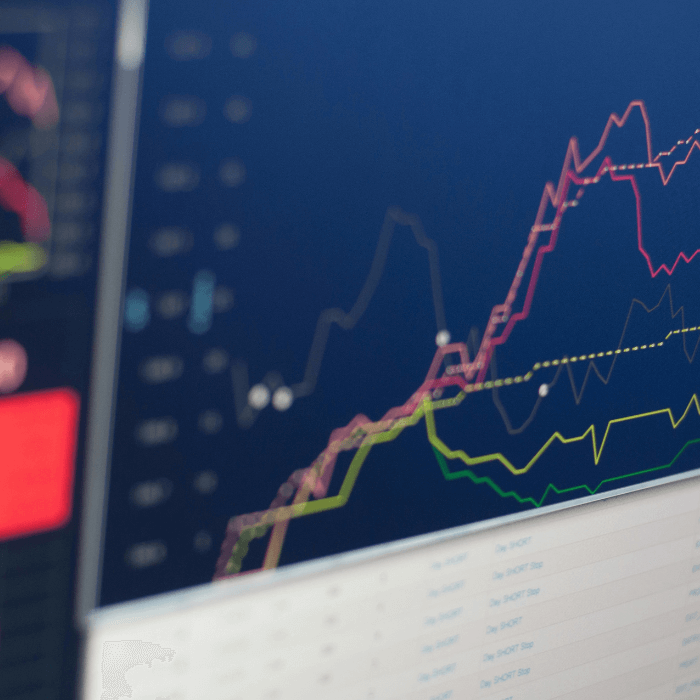Physical vs. Digital Gold Investment: Diversifying with Digital and Tangible Assets
The Royal Mint
July 2024
Category: Invest

For thousands of years, gold has been seen as a symbol of wealth and an asset that has been treasured across cultures and civilisations for its beauty, rarity and enduring worth. From ancient coins and jewellery to physical and digital incarnations, the timeless allure of gold is just as prevalent today as ever.
In today's complex financial landscape, diversification can be crucial for any investment portfolio and as a tangible asset, gold can provide a sense of security and stability, especially in times of economic uncertainty.
As covered in previous articles, diversification can be key to building a balanced and secure investment portfolio as, by spreading assets across various asset classes, investors can manage risk and potentially enhance returns. Gold, both in its physical and digital form, could help play a significant role in diversification strategies for investors at any level.
This article aims to explore the differences between physical and digital gold investments, highlighting their respective benefits and considerations. Whether you’re new to gold investing or simply trying to decide between physical and digital gold options, gaining a broader understanding of these distinctions should help you make informed decisions and potentially achieve a balanced and more resilient investment portfolio.
Physical Gold Investment
Physical gold tends to refer to tangible gold assets that you can hold in your hand. The most common forms of physical gold investments are bullion coins and bars, most notably bullion coins produced by The Royal Mint including The Sovereign or Britannia. These coins are popular choices for many reasons, partly because of their recognised purity and weight, but also because of the appeal of the design. Bullion ranges such as the popular Myths and Legends coins offer a variety of designs and sizes to investors, adding to their physical and aesthetic appeal. This is because some investors choose bullion coins not only for their investment value but also for their collectable nature and because of the artistry involved. This makes them a popular choice both as assets, but also as attractive objects to own and collect.
Gold bars are also a popular choice of physical bullion, as much like coins, they are available in a variety of sizes and designs, offering another straightforward way to invest in physical gold.
Benefits of Physical Gold
One of the primary benefits of physical gold is its tangibility. There is no doubt that for some, holding a coin or bar provides a sense of security and ownership that digital assets cannot match. Physical gold bullion, in any form, has been used as a store of wealth and a medium of exchange for centuries, making it a trusted investment choice for many during times of economic and political uncertainty. In addition to this, physical gold is also one of the most liquid assets that you could have. If you need quick access to your assets, you could easily find a dealer or buyer willing to purchase your gold at any time, ensuring that you can convert your investment into cash when necessary.
Considerations of Physical Gold
As with any physical item, investing in gold comes with certain practical considerations. Owning valuable items such as precious metals requires secure storage solutions. Many will choose to keep their investments at home, though this may require additional security in the form of a home safe and associated insurance against loss, damage or theft. Alternatively, storing your items at a safe location away from your home, such as in The Vault® at The Royal Mint, might be a consideration, but this would also incur additional costs.
Cashing in your gold might be an option, since gold is a highly liquid asset. However, selling gold at a price which suits both the buyer and seller might not always be straightforward. Transactions often involve additional fees, and finding a trustworthy buyer or dealer is essential to ensure fair and accurate pricing. In addition to this, the upfront costs of physical gold may be higher than digital alternatives due to the manufacturing and fabrication costs involved.
Digital Gold Investment
Digital Gold represents ownership through digital platforms, allowing investors to buy, sell, hold and trade gold electronically. The Royal Mint offers its own digital gold trading solution known as DigiGold. Other digital precious metal assets are available, including silver and platinum, allowing investors quick and easy access to a range of asset options.
Although throughout this article we refer to physical and digital assets, all digital assets available through The Royal Mint are backed by actual, physical precious metals which are stored securely by The Royal Mint at their vault in South Wales. This provides investors with a modern and convenient way to invest in gold, without the need for and associated considerations of physical possession.
Benefits of Digital Gold
The primary advantage of digital gold is convenience. Investors can purchase and manage their gold holdings online with just a few clicks, eliminating the need for physical storage and insurance. Digital Gold investments typically have lower transaction and premium costs compared to buying and selling physical gold, making them more accessible to a broader range of investors.
In addition, liquidity is another significant benefit of digital purchases. As transactions are conducted online, buying and selling is quick and convenient and can take place at a time which suits you. This ease of liquidity allows investors to quickly respond to market changes, making digital gold a flexible addition to any portfolio.
Fractional ownership is another key advantage of digital gold. Although physical gold is available in a variety of sizes, digital gold is even more flexible, allowing you to purchase fractional amounts down to the nearest 0.001toz. This means investors can start with smaller amounts, gradually increasing their holdings over time.
Considerations of Digital Gold
Despite the benefits, digital gold investments have some considerations. A drawback for some might be the lack of physical possession. Some investors value the tangible aspects of holding gold, and digital ownership might not provide the same level of comfort or perceived security.
Reliance on digital platforms is another factor to consider as both the security and availability of the service is crucial. As investors can trade at any time when the market conditions are favourable to them, it would be important to choose a trading platform with a good reputation for availability, reliability and security.
Making a Gold Investment Choice
When deciding between physical and digital gold, it is essential to consider your personal investment goals, and to seek independent advice where appropriate. Physical gold may be more suitable for those seeking long-term security and a tangible asset they can hold, and perhaps gift or leave to loved ones in the form of inheritance. On the other hand, digital gold may appeal if you are looking for flexibility, lower transaction costs and the ability to quickly adjust your portfolio in response to market conditions.
Cost Considerations
Understanding the costs associated with each type of gold investment is crucial. Physical gold may require additional upfront costs in the form of higher purchasing premiums, due to the costs of manufacturing and fabrication. In addition, if you do elect secure off-site storage to hold your investment, there will be ongoing storage costs to consider. In contrast, digital gold typically has lower upfront and transaction costs, though you will still likely pay ongoing storage fees as well as another transaction costs when it is time to sell. Comparing these costs will help you determine the most cost-effective way to include gold in your investment strategy and overall portfolio.
Investment Diversification
For some, a balanced approach that includes both physical and digital gold could provide more robust diversification for your investment portfolio. Physical gold could be used to serve as a hedge against extreme market conditions, potentially offering stability and a long-term safeguard against inflation. Meanwhile, a portion of your portfolio could be held in digital gold, allowing for quicker adjustments and greater control over your portfolio. By holding both forms of gold, investors could benefit from the security of physical assets, combined with the flexibility of digital investments.
The contents of this article are for general information purposes only and do not constitute investment, pensions, legal, tax, or other advice. Consult your financial, pensions, legal, tax, and accounting advisors before making any investment or financial decision.




